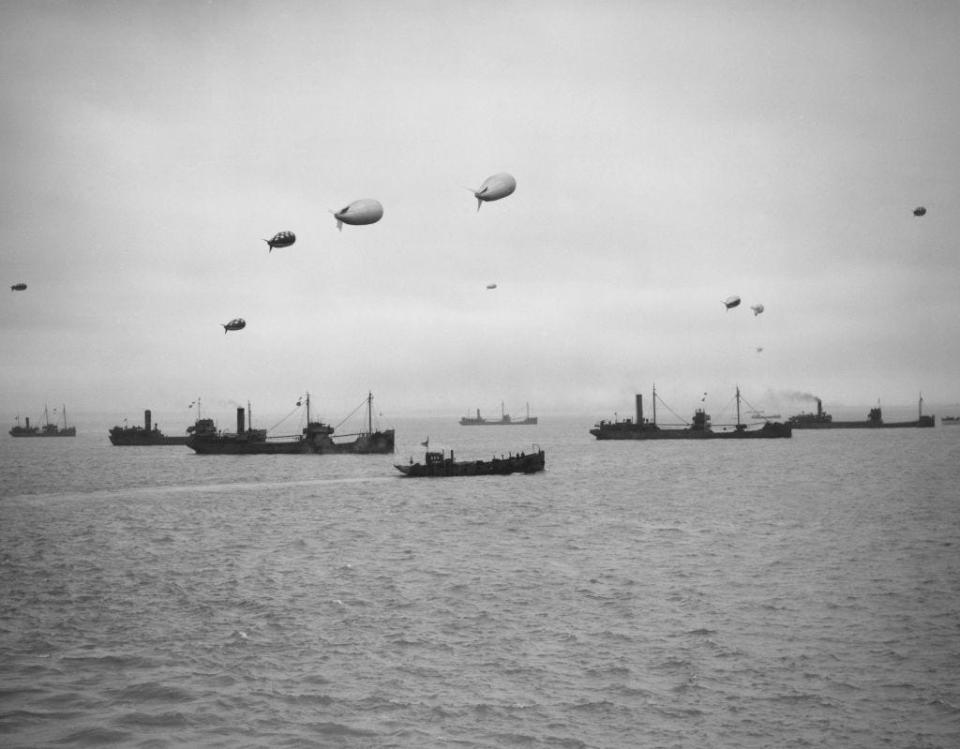Russia may resort to an old World War II tactic that had a key role in the D-Day landings to repel Ukrainian drone attacks
Russia is planning to use barrage balloons to counter Ukrainian drone strikes.
The balloons will rise up to 300 meters and drop a 250-meter net to stop drones from getting through.
The tactic was inspired by barrage balloons used in the First and Second World Wars.
Russia is developing a network of barrage balloons to repel Ukrainian drone strikes, inspired by a tactic used in World War I and II.
Speaking at a conference in St. Petersburg this week, Polina Albek, the general director of the Russian aerospace firm First Airship, which is developing the network, said: "Our main activity is building cargo airships, but today, based on the experience of our ancestors, we have created the 'barrier' defense system," the Russian state-run outlet RIA Novosti reported.
The balloons are designed to rise in a row up to 300 meters (984 feet) before dropping a 250-meter (820 feet) net designed to stop incoming drones, per The Telegraph. They have a maximum load of 30kg (around 66 pounds).
Albek said that the the balloons can also be fitted with a "vacuum gun" to shoot nets at oncoming drones, adding that the system has already been tested and that preliminary orders had been placed.
She noted that the developers had been inspired by the use of barrage balloons in WWI.
Barrage balloons were first used in WWI, but they played a particularly key role in Britain's defenses during WWII. According to London's Imperial War Museum, Britain had 2,748 barrage balloons in use by September 1941.
They were also crucial during the D-Day landings on June 6, 1944, providing protection to Allied soldiers and ships.
The balloons forced German aircraft to fly at higher altitudes, making their targets more difficult to strike as well as making them more vulnerable to antiaircraft fire.
The cables that anchored the balloons to the ground could also pose a serious risk to any aircraft attempting to fly through them.
The balloons offered "a vital means of defence against the [German] Luftwaffe as their trailing metal cables would severely damage or destroy any aircraft which touched them," according to the Royal Air Force's website.
"Attackers attempting to shoot down a balloon could be caught in an explosion of the hydrogen used to get them airborne," the site adds.

Since Russia launched its full-scale invasion of Ukraine in February 2022, Ukraine has continued to target Russian energy infrastructure and airbases with long-range drone attacks.
Lt. Gen. Kyrylo Budanov, the head of the Defense Intelligence Directorate of Ukraine, told The War Zone in June that Ukrainian forces had launched 70 drones in a strike on Morozovsk airbase in Russia's Rostov region, almost 200 miles from the Ukrainian border.
A security source told Sky News that the Ukrainian attack was part of a "sustained campaign to degrade the Russian Air Force."
Also in June, Kyiv said it had hit a prized Russian Su-57 stealth fighter jet stationed at the Akhtubinsk airfield in southern Russia — 360 miles from the front line.
In May, Ukraine claimed one of its longest drone attacks to date, with officials saying a drone traveled 930 miles to strike an oil refinery inside Russia.
Read the original article on Business Insider

